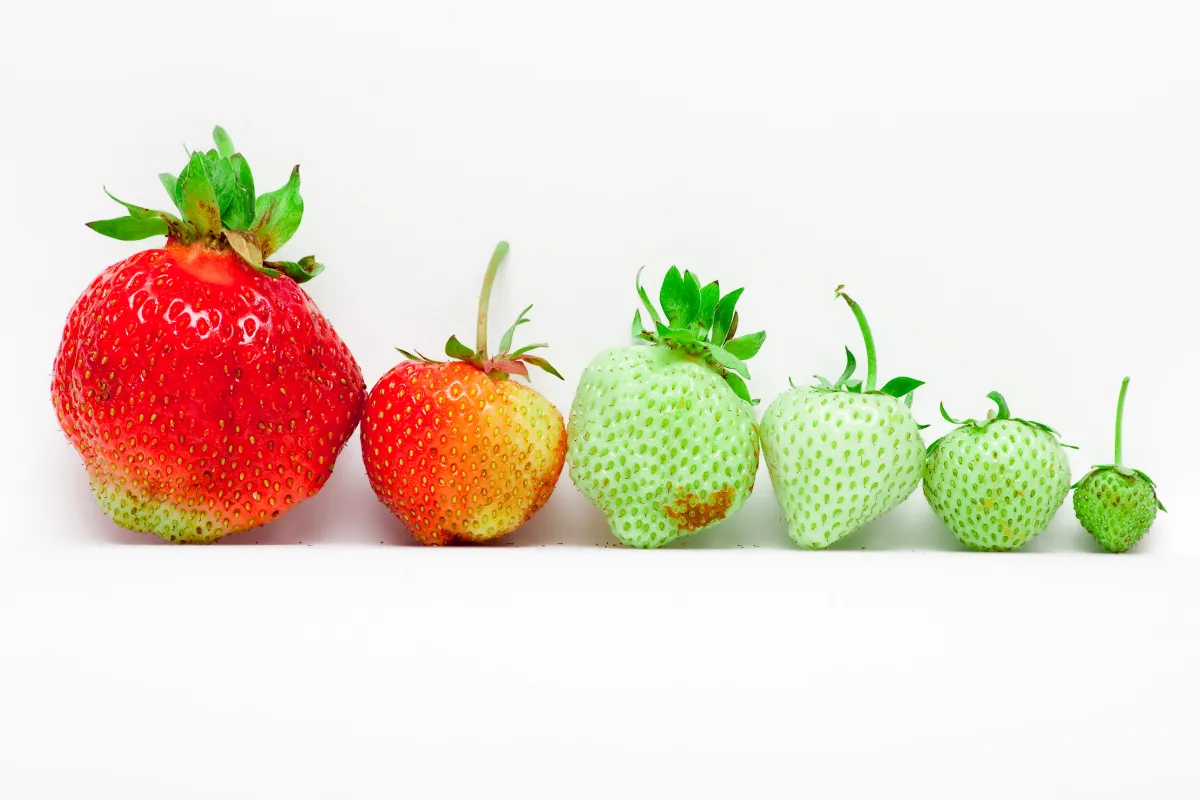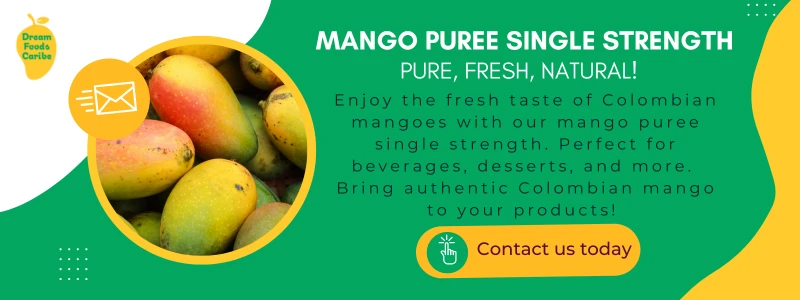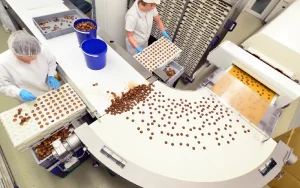Have you ever wondered what makes a fruit reach its peak of flavor and aroma? The answer lies in fruit ripening, an essential process in the food industry.
Join us to discover how this natural phenomenon is key to making delicious and nutritious fruit purées that conquer the US market.
Fruit ripening: what is the process like?
Fruit ripening is a complex process influenced by genetic factors that transform a green fruit into one with the following characteristics:
- Sweet.
- Mild.
- With better color and aroma.
These changes make it more attractive for consumption, but if ripening takes too long, it can lead to large crop losses. Researchers have identified several genes that regulate this process, leading to a better understanding of how fruits develop and ripen (Marc et al., 2024). In fact, enzymes are key to fruit ripening. Among them are:
- Pectinase: breaks down pectin, which makes the fruit softer.
- Amylase: converts starches into sugars, increasing their sweetness
- Ethylene: a plant hormone that regulates many of the changes that occur during ripening.
According to the food grading, fruit ripening is ideal for producing high-quality purées. These maximize their organoleptic characteristics. Thus, ripe fruits not only taste better but are also more nutritious and easier to digest.
Chemistry of maturation
During fruit ripening, the increase of sugars in fruits can contribute to a slight caramelization, which intensifies the sweet taste in purées. In addition:
- Starch is a sweet taste (the sugar in fruits).
- Organic acids decrease, softening its taste.
The stages of ripening are:
- Pre-ripe: the fruit is still green and not suitable for consumption.
- Maturity: the fruit reaches its best flavor and texture.
- Overripe: fruit may become soft or wrinkled.
Benefits of fruit ripening
This biological process provides numerous benefits that enhance fruit characteristics. In the following section, we will delve into how ripening improves food quality across various key aspects:
- Improve the taste, aroma, and texture of the fruit, making it more attractive for consumption.
- Ripe fruits are ideal to produce high-quality purées, which make the most of their organoleptic characteristics.
- Not only do they taste better, but they are also more nutritious and easier to digest.
Fruit ripening for puréeing
In a market where the consumer acts as a supertaster, meticulously assessing the quality and authenticity of products, attention to detail in processes such as maturation becomes even more vital.
In industrial settings, various techniques can be used to manage the ripening of fruits to ensure that they reach their optimum before processing.
This natural process involves changes in the fruit that improve its flavor, texture, and aroma, due to the accumulation of sugars and reduction of acids (Oakes, 2021). Fruit ripening follows several stages:
- Initial growth and development: the fruit starts to grow after pollination.
- At physiological maturity: the fruit attains its final size and shape, although it is not yet fit for consumption.
- Commercial maturity indicates that the fruit is ready to be harvested and sold.
- Post-harvest maturity: after being harvested, the fruit continues to ripen, affecting its taste and texture.
However, the factors that undoubtedly influence maturation are:
- Plant hormones: ethylene controls the production of enzymes that facilitate chemical transformations.
- Temperature: cooling slows down ripening, while heat speeds up ripening.
- A humid environment can facilitate the growth of fungi, while a lack of moisture can lead to early dehydration.
What are the advantages of having this input?
Here are the most important advantages of using ripe fruit in purée production:
- The products will have an intense, natural taste and flavor. This is due to the reduced need for sugars and artificial flavors.
- Its smooth, homogenous texture makes it ideal to produce consistent purées. It is perfect for yogurts, desserts, and sauces.
- It has a higher nutritional value due to its higher content of vitamins and antioxidants.
- It has a high versatility in the food industry. It is suitable for a wide range of products, from baby food to confectionery and beverages (Food Tech Peru, 2024).
Key to success in high-quality purées
This process is crucial in the industrial production of purées, ensuring products of excellent quality and taste. In the US market, where natural and nutritious foods are highly valued, their use allows for the creation of more appealing and competitive products. Controlled ripening not only improves organoleptic characteristics but also helps to manage the shelf life of perishable food, such as fruits, which are essential in the production of purées.
Bibliographic references
- Food Tech Perú. (2024, March 11th). Pulpeadoras: procesando frutos en la industria alimentaria.
- Marc, A., Mureșan, C., Pop, A. and Smaranda, G. (2024). An Overview of Ripening Processes. In: R. Marc. and C. Mureșan. New discoveries in the ripening processes.
- Oakes, K. (2021, February 2nd). Frutas en su punto óptimo de maduración | ¿Cómo lo hacen? Food Unfolded.






